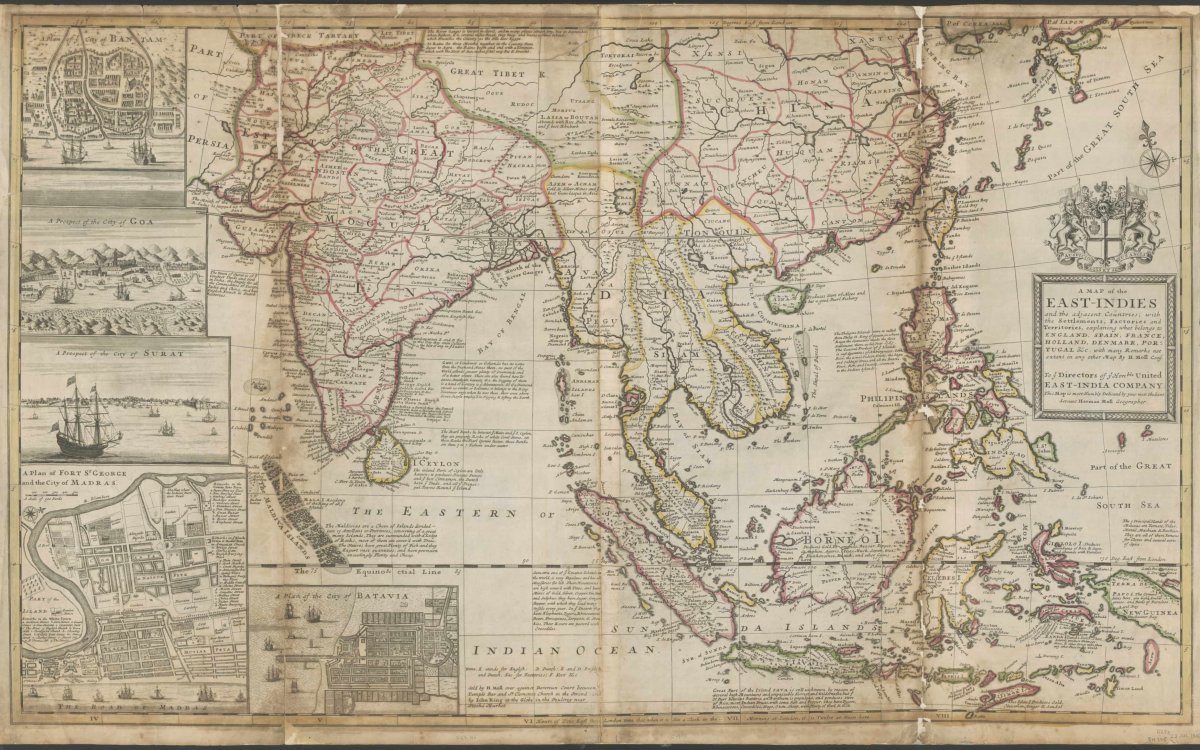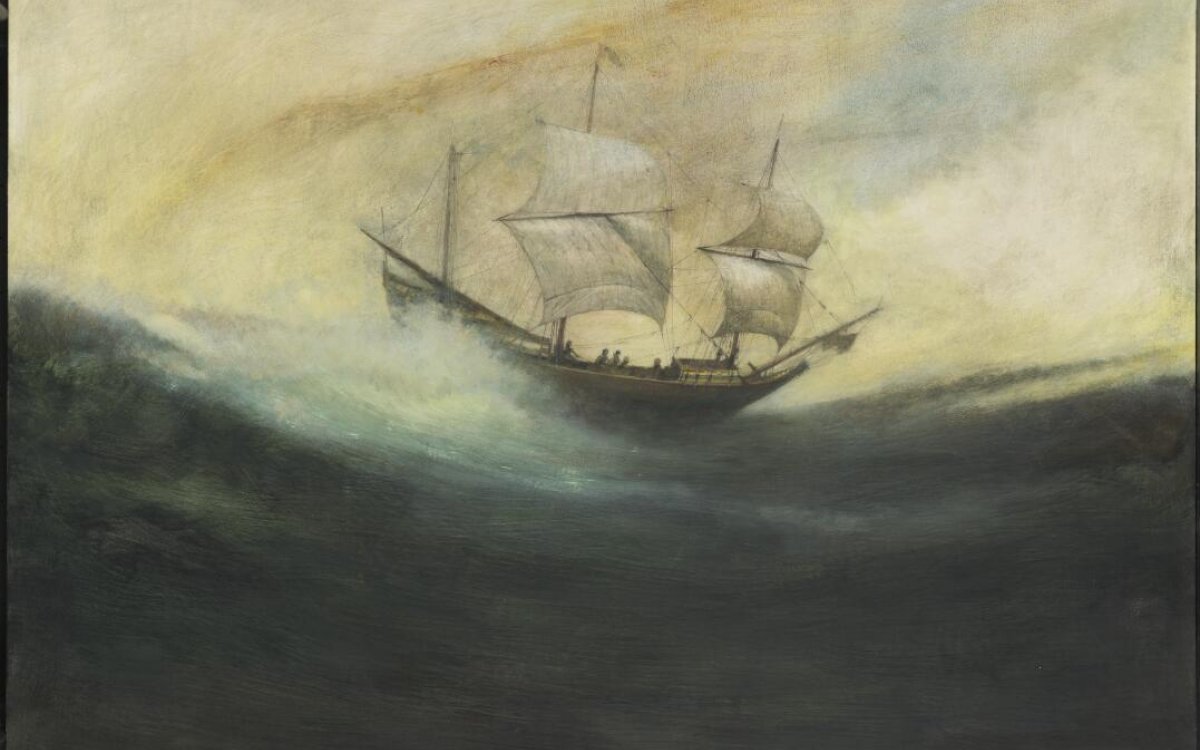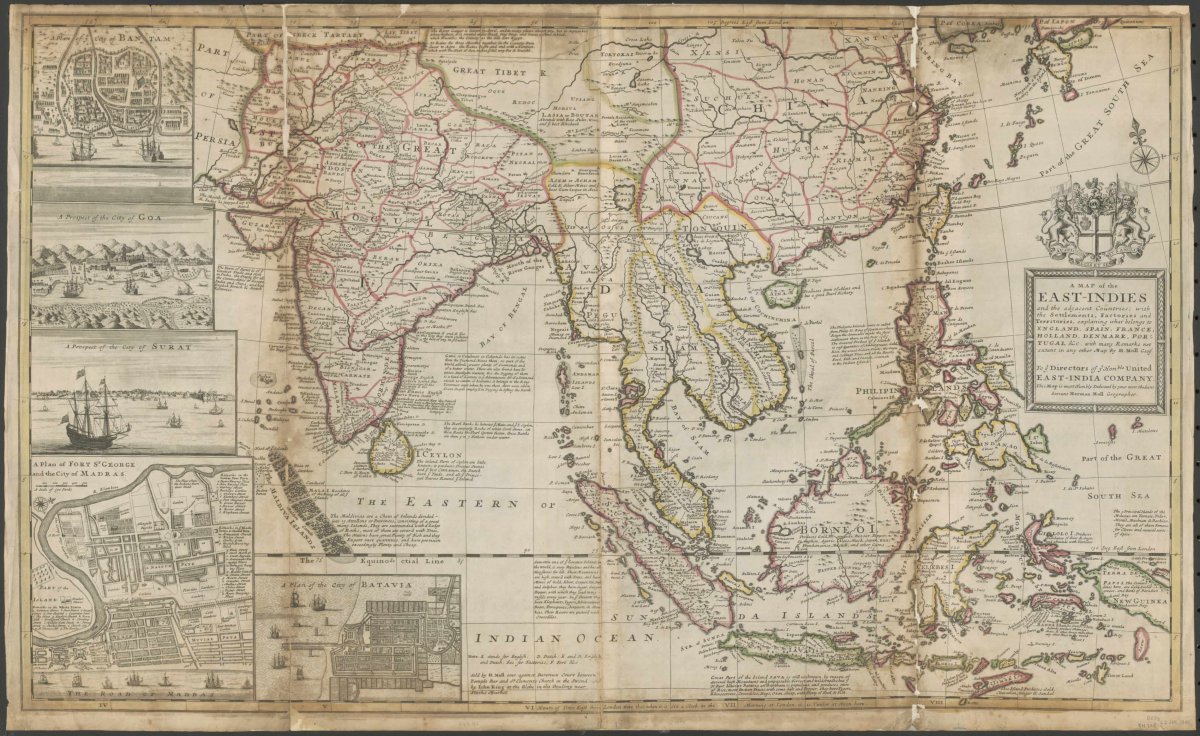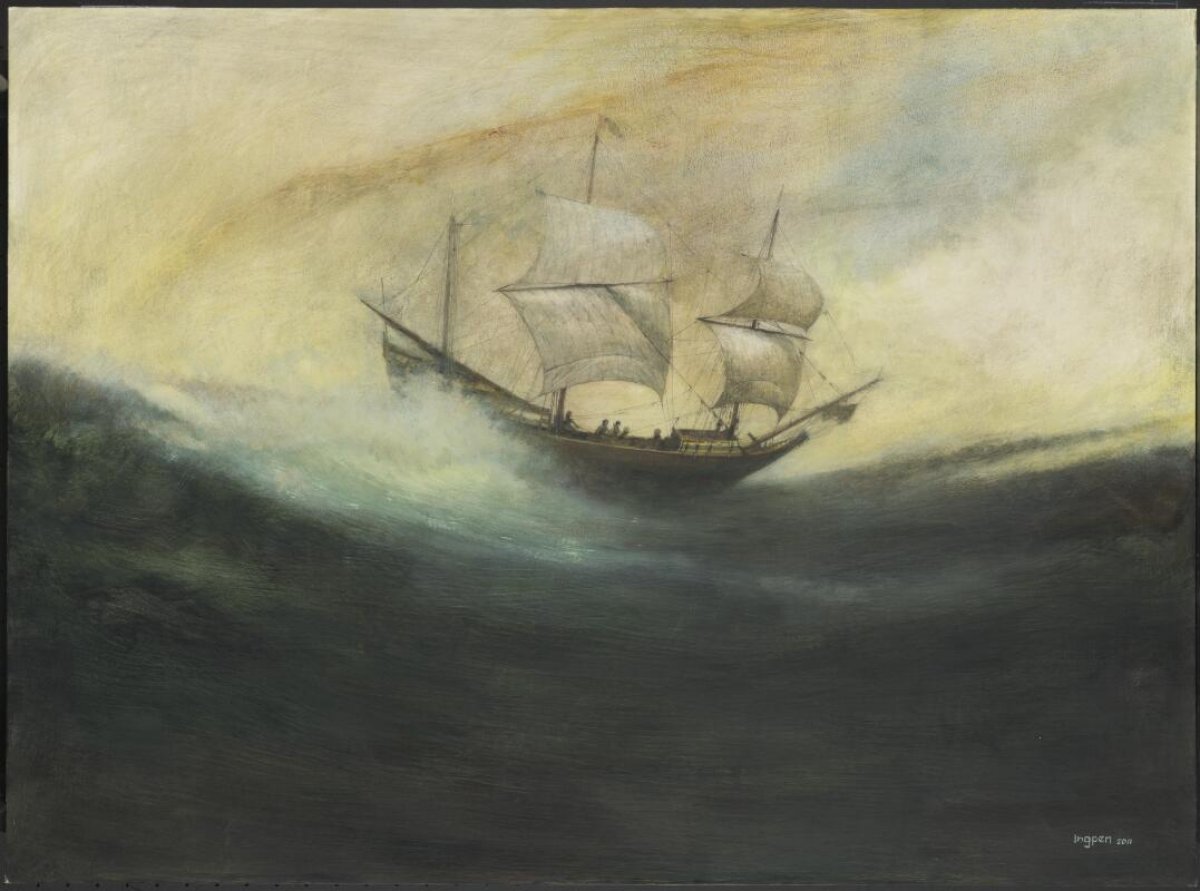This resource has been generously supported by the Embassy of the Kingdom of the Netherlands in Australia, to commemorate the 400th anniversary of the arrival of Dirk Hartog on the West Australian coast in 1616.
The Vereenigde Oostindische Compagnie from the Netherlands (VOC or United East Indies Company) was established in 1602 with the purpose of buying spices from East Asia for trade on the European market. It was the largest and most powerful trading company in Europe in the seventeenth century. Building 1,500 of their own ships, by the mid-eighteenth century the VOC employed over 25,000 people.
During the 1600s and 1700s, many of the nearly 5,000 VOC journeys to Asia—where the world’s finest spice were sourced—arrived on the coast of Australia, or New Holland.
Unfortunately, some of those voyages were shipwrecked on the treacherous West Australian coast, leaving survivors to live out their remaining days in a territory unknown to Europeans.
The size of the company meant that the VOC had the military strength and finances to maintain dominance of the world economy of fine spices. Costly military operations in the Banda Archipelago in 1622 ensured the VOC held the monopoly on nutmeg and mace. Capturing Makassar in 1667 gave them the clove market. Similarly, the VOC dominated the trade of cinnamon, having ruling out competition from the Portuguese. After accessing the spice islands of Maluku, they set the world price on pepper for most of the seventeenth century. This map, created in England in 1717 by Herman Moll, details the territorial claims in the East Indies, with labels to indicate the location of various spices and trade opportunities, as well as established settlements and factories.
Not only did the VOC dominate the world economy for two centuries, the Dutch nation that they represented was also responsible for significant moments in the history of the maritime exploration of Australia. One hundred and seventy years before James Cook ever sighted Australia, a Dutch ship of the VOC sighted the Australian coastline. Willem Janszoon landed the Duyfken near Cape York in 1606 and the Dutch connection with Australia began.

Moll, Herman, -1732 & Dampier, William, 1652-1715. Collection of voyages. (1729). A map of the East-Indies and adjacent countries [cartographic material] : with settlements, factories, and territories : explaining what belongs to England, Spain, France, Holland, Denmark, Portugal, etc. with many remarks not extant in any other map / by H. Moll, geog. http://nla.gov.au/nla.obj-231221936
Australia on the World Map
Show students this video, prepared by the National Library of Australia, as part of the Mapping Our World exhibition in 2014.
On a smartboard, prepare online links to the 12 maps listed below, in the chronological order presented. This PDF has background information on each map.
- Copy of 1606 Map of path of the Duyfken
- 1627 Map of the Land of Eendracht, by Hessell Gerritsz
- 1639 map of SouthEast Asia by Hendrik Hondius
- 1647 Map of the Moloccan Islands by Willem Blaeu
- 1658 Map of India, by Jan Jansson, taken from Hendrick Doncker Altas
- 1663 Map, Archipelagus Orientalis, sive Asiaticus by Apud Ioannem Blaeu
- 1673 Map from the Typus orbis terrarium, or Ortelius Atlas
- 1744 Complete Map of the Southern Continent by Emanuel Bowen
- 1745 Map of Sunda Strait by Isaac de Graaff
- 1751 Map by Sutton Nichols
- Map depicting “The part borne by the Dutch in the discovery of Australia 1606-1765”
- 1814 Map of Australia by Matthew Flinders
Tell your students that they will be engaging in an activity to help them understand that the world wasn’t always mapped out for ships to navigate, and that some land masses, such as Australia, were at one time not recorded on any map.
Arrange students into groups and provide each group with 2–3 printed maps taken from the 12 maps listed above. Ensure that each map is represented at least once.
Allow students ten minutes to examine the maps in their group and discuss the features of each one. They should interrogate each map with the following questions:
- What makes one map look older than another?
- What features do they have in common?
- Does one have more detail in regards to Australia?
- Which one do you think was created first?
- What would motivate someone to make a map?
- Why would people from one continent wish to visit other lands?
At the end of their discussion time, have one member of each group present their findings to the class.
Use the smartboard to examine each map and highlight the features students have noticed. Provide the background information to each map and, where applicable, zoom in to show particular areas of interest, such as Australia.
When the class has finished presenting their findings, use the smartboard to establish the correct chronological order of the maps, discussing how the maps change over time.
In building a class discussion about the maps, prompt the students with the following questions:
- What factors do you think determined whether an area was mapped?
- What do you think led to Australia being mapped?
- What do you think influences where ships might land?
- Why do you think only the west coast of Australia appears on many maps?
- What decorative features do the maps include and why?
- Why do you think it took a long time for the whole of Australia to appear on world maps?
- Have a look at how far Amsterdam is from Asia. How long do you think this voyage would take?
People of the Vereenigde Oostindische Compagnie
Between 1602 and 1796, the United East India Company sent almost a million Europeans to work in Asia on nearly 5,000 ships. To comprehend the truly grand scale of the company, students will research the key personalities as well as some of the lesser-known players.
1. After giving your students background information about the VOC, have them work in pairs to investigate one of the following identities:
- Willem Janszoon
- Frederick de Houtman
- Francisco Pelsaert
- Abel Tasman
- Dirck/Dirk Hartogh
- Pieter Albertsz / Albertszoon
- Anthony van Diemen
- Willem Hesselsz de Vlamingh
- Jan Carstensz / Carstenszoon
- Pieter de Carpentier
- Pieter Nuyts
- Gerrit Frederikszoon de Witt
- Salomon Sweers
- Frederick Hendrick van Orange-Nassau
In compiling their half page biography, have them identify:
- When did their person live?
- Where did they live or have the most influence?
- Why were they important in the story of the VOC?
- Are there any places in Australia named after this person?
- Can you find an illustration of this person? (If so, include it on your page.)
Display the biographies in the classroom, in order of birth year. Students should gain an understanding of the centuries over which the VOC operated.
2. Having completed the above task, students will have discovered that there is a place in Australia linked to each of these Dutch people. Using a map of Australia, have your students identify and label these places.
The students will have discovered only a few of the 200 or so places in Australia named after Dutch exploration and influence. Have them see how many more of these places they can identify, and add these to the map, including Cape Inscription, Arnhem Land, Rottnest Island, Groote Eylandt, Storm Bay, Maria Island and Cape Leeuwin.

Ingpen, Robert, 1936-. (2011). The Duyfken off Australia, 1606 / Robert Ingpen. https://nla.gov.au/nla.obj-138210565
One of the earliest ships of the VOC was the Duyfken. The ship had sailed several voyages for the company, and Willem Janszoon took the helm in late 1605, in anticipation of finding gold and other trade opportunities in as yet uncharted lands.
The National Library of Australia’s Pictures Collection includes Robert Ingpen’s stunning contemporary oil painting of the ship. Figures can be seen hauling on lines in the 2011 painting, invoking a sense of adventure and an appreciation of the power of the ocean that VOC vessels both relied upon and were lost to in their search for trade opportunities.
Venturing south-east, Janszoon and his crew charted part of the coast of Nova Guinea (New Guinea). They then sailed further south into unknown territory and, although they did not find any gold, in 1606 they charted 320 kilometres of the Australian coast near Cape York in the Gulf of Carpentaria. They made landfall at the Pennefather River, near the town of Weipa.
Janszoon had most likely believed the area to be an extension of New Guinea; in fact, he was the first European to map and record the continent of Australia. While onshore, the crew encountered the Wik people, and this is now known to be the first recorded interaction between Europeans and Australia’s Indigenous population.
At that moment, all of the inhabited continents of the world were finally documented in maps. It was a pivotal moment in world cartography and in Australian history, as the continent and people of Australia were now known to the rest of the world.
One of the earliest ships of the VOC was the Duyfken. The ship had sailed several voyages for the company, and Willem Janszoon took the helm in late 1605, in anticipation of finding gold and other trade opportunities in as yet uncharted lands.
The National Library of Australia’s Pictures Collection includes Robert Ingpen’s stunning contemporary oil painting of the ship. Figures can be seen hauling on lines in the 2011 painting, invoking a sense of adventure and an appreciation of the power of the ocean that VOC vessels both relied upon and were lost to in their search for trade opportunities.
Venturing south-east, Janszoon and his crew charted part of the coast of Nova Guinea (New Guinea). They then sailed further south into unknown territory and, although they did not find any gold, in 1606 they charted 320 kilometres of the Australian coast near Cape York in the Gulf of Carpentaria. They made landfall at the Pennefather River, near the town of Weipa.
Janszoon had most likely believed the area to be an extension of New Guinea; in fact, he was the first European to map and record the continent of Australia. While onshore, the crew encountered the Wik people, and this is now known to be the first recorded interaction between Europeans and Australia’s Indigenous population.
At that moment, all of the inhabited continents of the world were finally documented in maps. It was a pivotal moment in world cartography and in Australian history, as the continent and people of Australia were now known to the rest of the world.
1606 and the arrival of the Duyfken
1. Have students revisit the map of the path of the Duyfken, examined earlier in the 'Australia on the World Map' activity.
This map is known at the Duyfken chart, and it wasn’t found until 1933, in a library in Vienna. Although the Duyfken crew assumed the area was part of New Guinea, it is an extremely accurate account of what we now call the Gulf of Carpentaria. The National Library of Australia holds a copy of the original map.
Using Google Maps, have students search for Weipa in Queensland.
Have students compare the 1606 map with the Google map of Australia today, considering the following questions:
- What similarities and differences can you find?
- Why do you think Janszoon thought it was an extension of New Guinea?
- How far in kilometres is the distance between the tip of Australia and Papua New Guinea?
- Can you identify the parts of Papua New Guinea on the 1606 map?
- Look closely at the islands in the Torres Strait, on Google Maps. Do you think people living on these islands might have had contact with people in Papua New Guinea?
2. Have students complete a research assignment, investigating one or more of the following:
- The other voyages taken by the Duyfken, in its service to the VOC
- Other voyages to that area, by merchants of the VOC
- The building of a replica of the Duyfken and the ship’s planned activities in 2016
- The exchange that took place between the crew of the Duyfken and the Wik people they met in the Gulf of Carpentaria
- The cultures of the language groups in the Gulf of Carpentaria and Torres Strait
- The agreement with Papua New Guinea as to the governance of the islands in the Torres Strait
- The life of Edward Koiki Mabo
- Torres Strait Islander conservation
Other Digital Classroom resources that relate to the concepts explored in this source include: Early Explorers, Torres Strait Islander Conservation and Edward Koiki Mabo.

